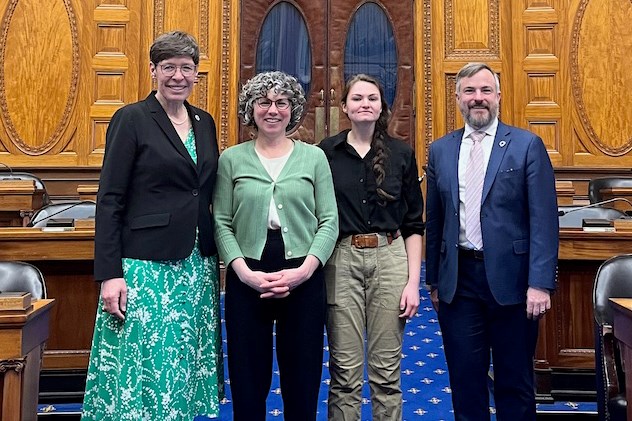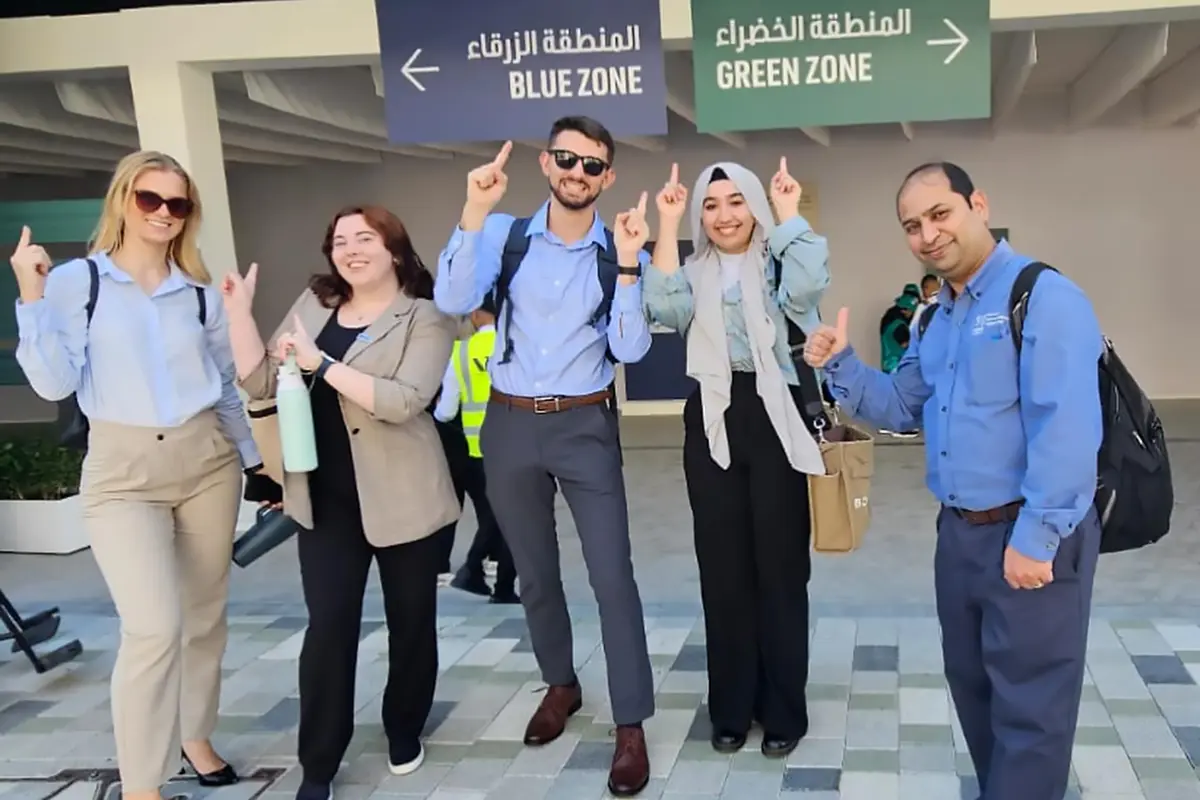 Image by Brooke Coupal
Image by Brooke Coupal
Prof. Juliette Rooney-Varga and her collaborators want to grow the adoption of educational tools on sustainability.
The biggest polluters in the world – China, the United States and India – are among more than 140 countries that have pledged to reach net-zero greenhouse gas emissions to combat climate change. But will the world reach net zero by 2050 to keep global warming to no more than 1.5 degrees Celsius? Experts are doubtful.
“Net-zero emissions pledges now cover most of the global economy, but policies and actions to achieve those pledges lag,” says Juliette Rooney-Varga, a professor in the Department of Environmental, Earth and Atmospheric Sciences and director of the UMass Lowell Climate Change Initiative.
To close the gap between pledges and action, Rooney-Varga says, there’s a need for widespread sustainability education. Many educational tools exist to inform people about climate change and its solutions, but the adoption of those tools is growing too slowly, she says.
How can educational innovations in sustainability be scaled rapidly and keep pace with the needs of a changing planet?
A dynamic computational model developed by Rooney-Varga, Physics Professor Charles Henderson at Western Michigan University, Construction Engineering and Management Professor David Ford at Virginia Tech and Professor Florian Kapmeier, who teaches business strategy at Reutlingen University in Germany, shows a need to build communities of educators who collaborate to disseminate sustainability education innovations widely. Their findings were recently published in the scientific journal Nature Sustainability.
“Our research focused on higher education because of the critical role it plays in building capacity to address sustainability, preparing sustainability professionals and increasing sustainability literacy across professions,” says Rooney-Varga, whose National Science Foundation grants totaling $2.7 million helped to fund this research.
The researchers’ computational model, which is publicly available online, examines different strategies for sharing educational tools on sustainability, such as the World Climate Simulation and the Climate Action Simulation. Previous research shows that these tools, which combine role-playing exercises with interactive computer simulations, not only increase understanding of climate change and its solutions, but also motivate evidence-based climate action. However, the tools are not used widely enough.
To change this, the researchers analyzed the dynamics of several approaches for disseminating the climate education tools, including common outreach practices, such as workshops and digital campaigns, and the less frequently used community-based approach, which involves cultivating a group of educators who use the educational tools successfully, believe in their value, support potential adopters in using the tools and encourage adopters to become ambassadors.
Through the computational model, the researchers discovered that the community-based approach led to “exponential growth in both adopters and ambassadors” over time, compared with word-of-mouth promotion or outreach.
The researchers are sharing the strategy with others looking to grow the use of educational tools, such as Climate Interactive, which is now designing an ambassadors program for its climate solutions simulator, En-ROADS. The researchers are also emphasizing their findings to university administrators to relay that interdisciplinary collaboration is critical for scaling educational innovations. They’re additionally informing funders about the value of supporting efforts to build communities of educators who work together to grow innovations.
“The spread of tools for sustainability in higher education is central to preparing the next generation of decision-makers and leaders in society,” Rooney-Varga says. “It is urgently needed to help our society get closer to our climate goals.”




